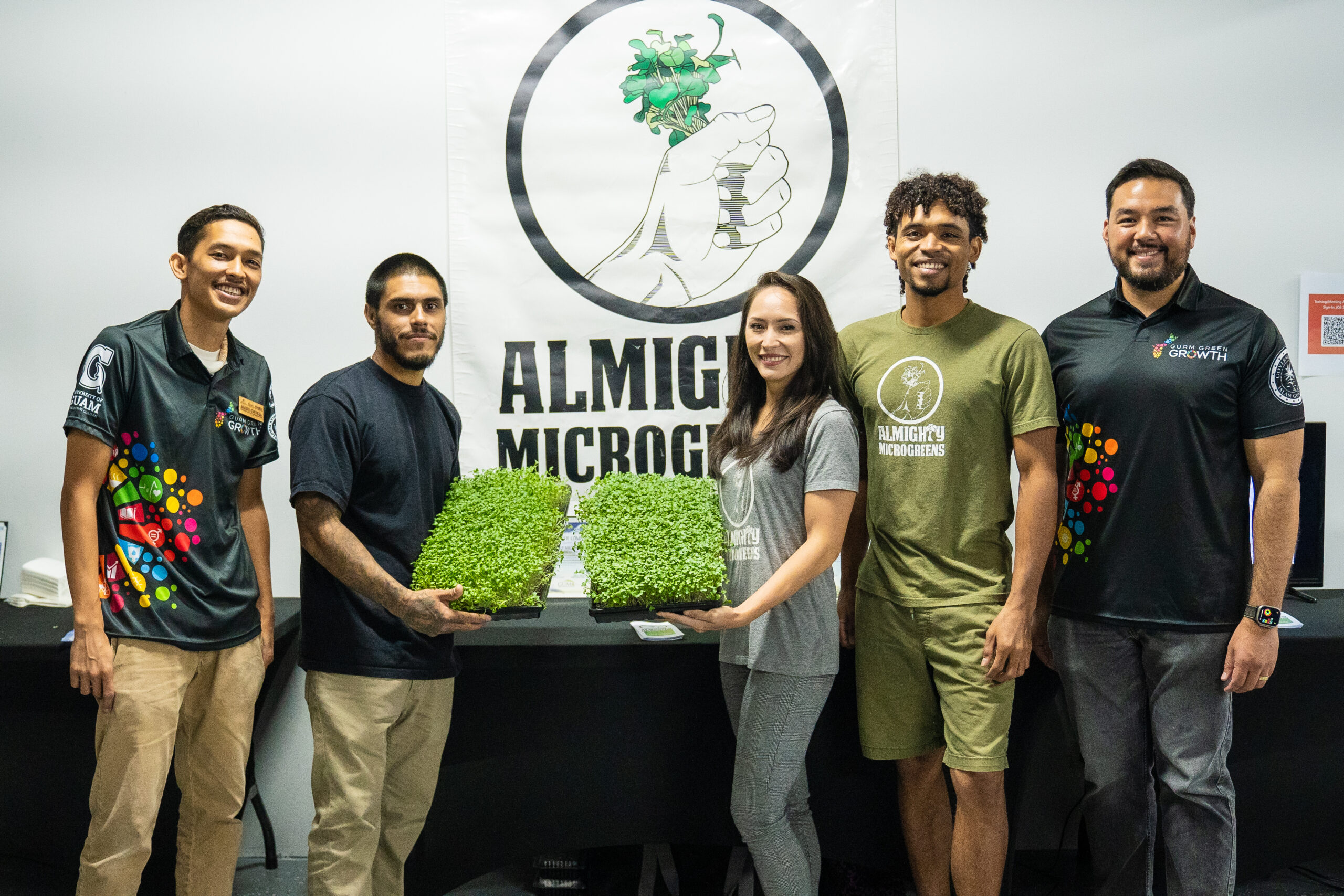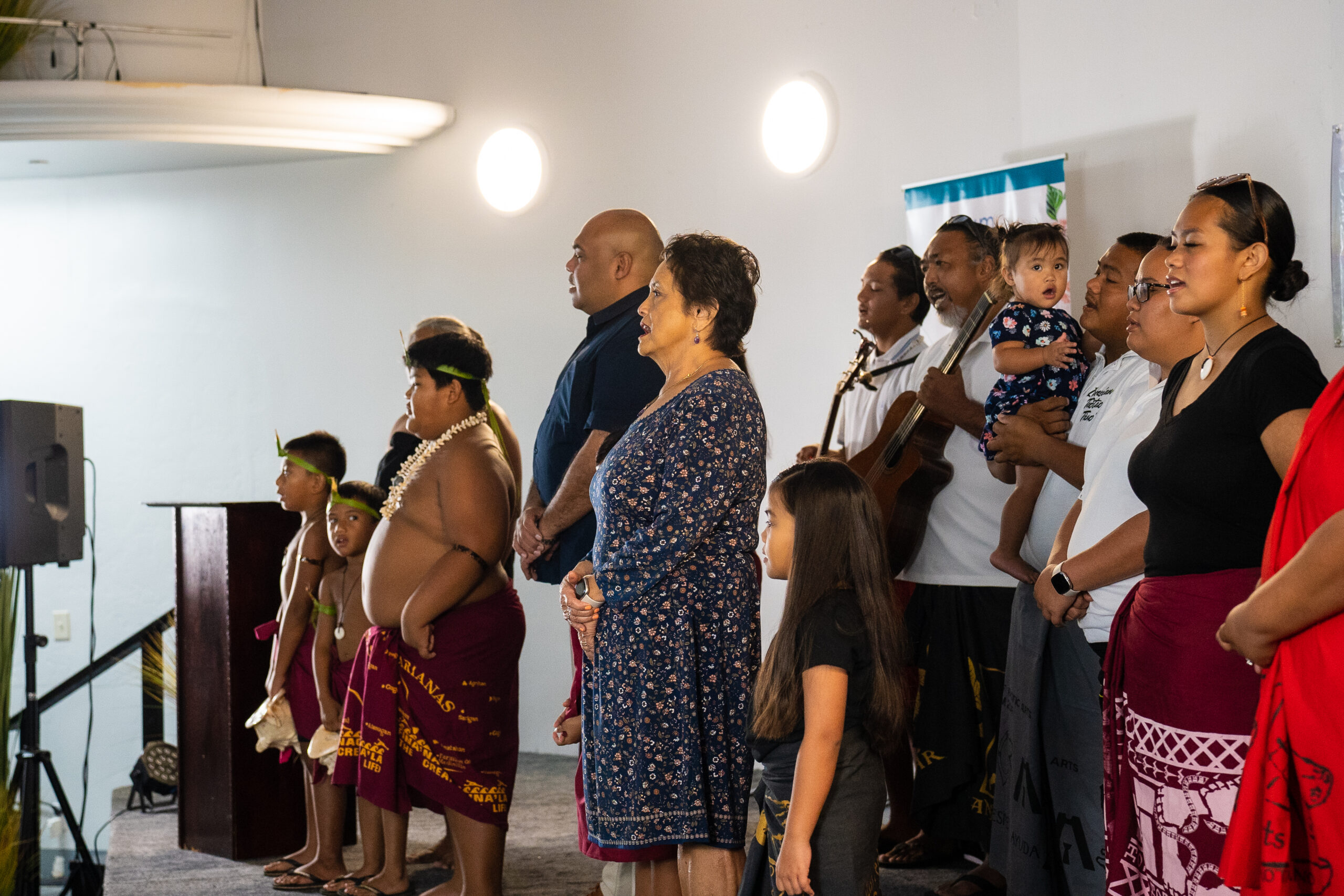Guam NSF EPSCoR is excited to celebrate five undergraduate students from the University of Guam for completing their term with the 2023 Student Research Experience, which provides research opportunities and mentorship to selected students for a year.
As part of their research training, these students conducted field work to investigate coral reefs and learned skills such as DNA extraction and sequencing.
This year, the program’s student researchers engaged in a variety of fields such as coral genomics, marine microbiology, marine ecophysiology, and more.
ANNA MALLARI
Anna Mallari is a civil engineering student who, under the mentorship of Dr. Bastian Bentlage, studied microbial communities in the soils within the La Sa Fua Watershed in southern Guam.
“I believe that learning goes beyond the classroom setting, as it involves not only understanding theories and concepts but also applying them to solve real-world problems,” Mallari said. “Having the opportunity to conduct research that could contribute to our island’s sustainability is such a rewarding feeling.”
Mallari said that engaging in a research experience as an undergraduate was a privilege for her and that she found conducting research outside of the field of engineering a welcome challenge.
During her time in the program, Mallari was one of two UOG students who researched how to convert seawater into renewable energy as part of a summer program held at the U.S. Department of Energy’s Pacific Northwest National Laboratory.
MERRY ANN OCAMPO
Integrative biology major Merry Ann Ocampo said that the Guam NSF EPSCoR SRE program has not only opened up research opportunities for her, but the chance to connect with the community.
“As much as I enjoy my research, sharing it with the community is the best part because I get to interact with others about my new findings and my experience in being a student researcher,” said Ocampo. “Seeing others interested in my research makes me really happy and reminds me why I love science and research.”
Under the mentorship of Christopher Lobban, Ph.D., Ocampo studied the diatom genus Mastogloia on sea grass leaves. Diatoms are microalgae which can be found in every habitat where water is present. For her research project, Ocampo collected sea grass from various parts of Guam including sandy beaches and mangrove forests.
MADELINE GONZALEZ
Integrative biology major Madeline Gonzalez said that the Guam NSF EPSCoR SRE program is a great opportunity to learn new skills and explore careers.
Under the mentorship of Sarah Lemer, Ph.D., Gonalez studied the phylogeny of Spondylidae, a family of bivalve mollusks.
“Seeing the real-world applications of what I have been learning in my courses has been exciting.” said Gonzalez. “I’m always looking forward to learning something new – and there is always something new to learn in the lab.”
CASSANDRA PAULE
During her time in the Guam NSF EPSCoR SRE program, integrative biology major Cassandra Paule studied coral reproduction under the mentorship of Ciemon Caballes, Ph.D.
“I’m ecstatic to be a part of this research community,” said Paule.
BRANDON RESPICIO
Brandon Respicio is a secondary education major with a focus in mathematics who studied under the mentorship of Héloïse Rouzé, Ph.D., during his time in the SRE program.
Respicio’s project focused on the endolithic algae Ostreobium and the effect it has on the coral species Porites cylindrica. For his study, he compared P. cylindrica from Luminao and Tumon based on the eutrophication levels found in these areas.
Before his time in the SRE program, Respicio was in the 2022 Guam NSF EPSCoR Summer Math Research Program. During his time in the program, he was able to produce mathematical models based on coral reef dynamics in relation to algae.
“I enjoyed the research and experience I gained while being a EPSCoR SRE,” Respicio said.
In October 2023, Respicio’s project won a student poster award at this year’s 2023 SACNAS National Diversity in STEM Conference.








































